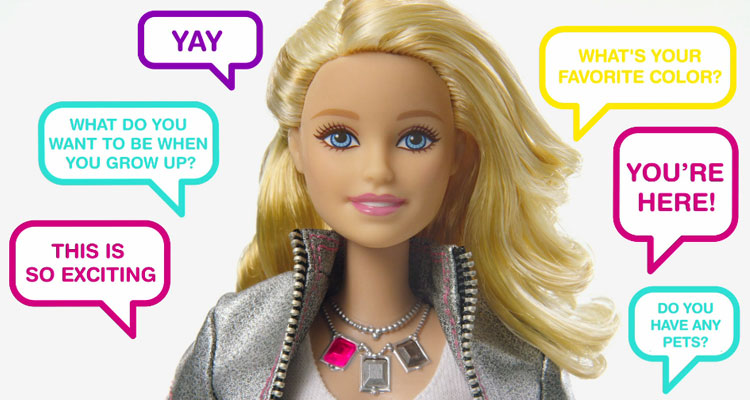If you haven’t walked through the doll aisle in a toy store lately, you may not have noticed that popular dolls such as Barbie, Bratz, and American Girl have undergone some significant changes recently.
Though not without its controversies, Barbie has been a toy favorite among girls since 1959. The doll has gone through a number of changes over the years, but this year it is going high tech.
Mattel has partnered with ToyTalk, a San Francisco tech firm founded by former Pixar executives, to produce “Hello Barbie,” a doll that understands and responds to speech.
Although the doll employs PullString technology, this is no Chatty Cathy or Teddy Ruxpin. The new Barbie is expected to deliver 8,000 lines of conversation as Mattel attempts to extend its core demographic to older children who are into technology-inspired toys.
While kids won’t be able to conversationally engage the $75 Barbie about Shakespeare, Einstein, or Abraham Lincoln, the doll will be able to respond to topics like favorite colors, fashion, favorite things to do at school, pets, and career paths.
Parents, who ultimately make the choice as to what toys their children play with, will be able to program the app to monitor their child’s conversations with the doll. But there are concerns. For instance, will Barbie recognize every holiday?
“If you are going to recognize Christmas, you want to make sure you recognize other significant religious holidays,” Mattel spokesperson Michelle Chidoni told the New York Post, which also noted the concerns of Campaign for a Commercial Free Childhood. That group worried that dialogue between a child and the doll (stored in the computing cloud) could be used for commercial purposes. Mattel will urge parents to wipe the app clean if they give the doll to another user.
Hello Barbie is not the first Barbie doll to “speak.” In 1992, Teen Talk Barbie spoke several random lines, including the much-criticized, “math class is tough” statement. That line was later removed amid protest from the American Association of University Women (AAUW). “We are pleased that Barbie has finally been given a voice,” AAUW‘s president at the time announced. “But it is a shame that Mattel didn’t give her a more confident one.” Barbie has advanced since then, with dolls who have careers in computer engineering, science, and math.
Is Hello Barbie part of a new trend in toy technology? Mattel has not disclosed whether talking Ken, Midge, or Skipper will be available anytime soon.
The dolls had no comment.
Bratz, a longtime rival of Barbie, has launched a new line based on the Netflix show Project Mc2 and designed with STEM education in mind.
The TV series (featuring education advocate and former Wonder Years star Danica McKellar) portrays four smart girls who are recruited to be spies thanks to their impressive science skills. Project Mc2 dolls (about $15 at major retailers) come with science experiment kits, such as instructions for making a glow stick necklace or an erupting volcano with ingredients commonly found at home. So, they have a nice education element.
According to Fortune.com, toy company MGA Entertainment’s CEO Isaac Larian was alarmed to learn that women were making up only about 15 percent of the school’s graduating class at his alma mater California Polytechnic State University.
“Hopefully, this is just the beginning,” Larian says. “We’d like to expand the project even further.”
“I’m torn,” says Dr. Jennifer Rohn, a biologist at University College London. “Obviously it’s a nice idea to have dolls that are encouraging girls to go into science and maths. But I look at these dolls and all I see are supermodels. They’re still beautiful, skinny, and unrealistic. It looks like Barbie repackaged with a beaker.”
Kids can also learn some positive lessons from the American Girl doll (now a division of Mattel). And this line also offers dolls and accessories to simulate real-life disabilities. Some have hearing aids, others no hair. A wheelchair accessory was first offered in 1997 and casts and crutches are also available.
American Girl isn’t alone when it comes to dolls facing challenges. MyTwinn also offers dolls with removable hearing aid, while Sew Dolling offers a line of special needs dolls, some with prosthetics, along with physical therapy equipment.
So, while the doll industry may be slow in catching up with the ever-changing landscape of kids and education, some are making advancements that may be helpful to kids today.




































